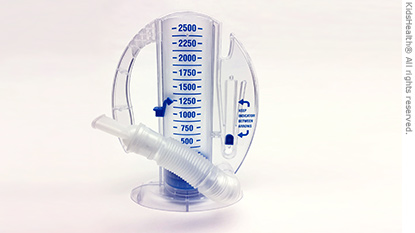This person is responsible for performing the surgery and may have one or more providers assisting.
The surgeon
informed consent
cholinergic agents: Neostigmine (Prostigmin)
What is this? and how is it used in the treatment for the patient?

1.) PCA pump (patient controlled analgesia)
2.) is an infusion of a prescribed amount of pain medication through an IV route when the patient pushes a button.
What are two ways to avoid aspiration pneumonia ?
1. Make sure that the head of the bed is elevated
2. start off with small bites
3.) Give foods that are easy to chew/ swallow
This person is involved in all three phases of the surgical process. They must be aware of the surgeon's actions, so they can do everything possible to keep the patient safe.
The Anesthesia provider
What class of medications should a patient not take prior to surgery because of the increased risk of bleeding?
Anticoagulant
This is a hypnotic agent, that provides a good amnestic but provides no analgesia. The effects wear off quickly when the medication is discontinued.
Propofol
What should the nurse do if they see this ?

Cover the wound with a sterile saline dressing
This is done to help the doctor determine the exact location of the infection. However it can not tell your doctor what kind of bacteria is causing the pneumonia
chest x-ray
Their duties include patient transport, positioning and securing the patient on the OR table. If there is any housekeeping duties they are the ones that could be called.
Unlicensed Assistive Personnel
When is a time out performed?
1.) By the circulating nurse upon transfer to surgical suite.
2.) Immediately preceding incision by entire team.
Ketamine
How would you treat a patient who just recently had GI surgery and is having a post-op complication of a postoperative ileus ?
you want the patient to rest their bowels:
1.) patient remains NPO until bowel motility returns
2.) insertion of a NG tube to decompress the stomach to ease nausea and prevent vomiting
What types of patients are the highest risks for developing pneumonia?
patients on a ventilator
This person helps count the sponges, needles and other supplies. They work directly with the surgeon by passing the instruments and helps the team don sterile gowns and gloves
the scrub nurse or scrub technologist
All patients requiring surgical intervention should have had nothing to eat or drink for at least how many hours prior to surgery ?
6- 8 hrs
These agents have a fast onset and quickly produce paralysis. They cause muscle twitching prior to the relaxation of the muscles.
depolarizing agents
What are the three most effective means of DVT prevention ?
1.) administering anticoagulants
2.) encourage activity
3.) using compression devices such as SCD's or TEDS
this type of pneumonia develops 48 hours after the patient has entered the hospital. One way the patient could develop this pneumonia is being immobile for a long period of time.
Hospital-acquired pneumonia
This person observes the surgical procedure from a broad perspective and documents information pertaining to the surgery. They assist with donning of sterile PPE and counting the number of sponges and other equipment.
circulating nurse
What are the three components of a time-out
1. correct patient
2.) correct procedure
3.) correct surgical site
lidocaine or Novocain
A patient comes out of the OR after receiving general anesthesia and begins to experience muscle rigidity and hyperthermia. How will you as the nurse treat this patient?
Administer dantrolene (muscle relaxant) and cool the patient.
To cool the patient, there are multiple things that could be done.
1.) Remove blankets and drapes
2.) IV infusion of cold normal saline
3.) Ice bags around the body
4.) Cold nasogastric lavage

What is this and give the steps on how to use it?
This is an incentive spirometer
- Have the patient sit up straight.
- Have the patient put the mouthpiece in their mouth and close their lips tightly around it.
- Inhale slowly and deeply through the mouthpiece to raise the indicator.
- When you cannot inhale any longer, remove the mouthpiece and hold your breath for at least 3-6 seconds.
- Exhale normally.